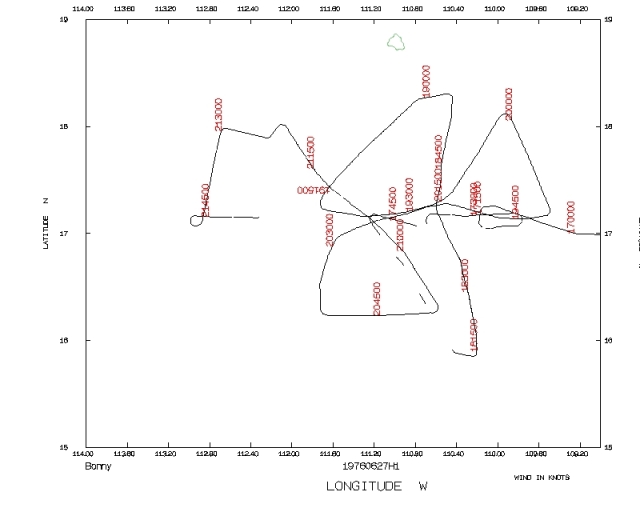
On August 27, 1976, NOAA’s new Orion P-3 research aircraft (NOAA 42) took off from Acapulco, Mexico and flew a mission into Hurricane Bonny. This was the first flight into a hurricane for this plane that had been acquired by the US Dept. of Commerce the previous year to replace the old DC-6 research planes used since 1960 to gather in situ weather data. Hurricane Camille in 1969 and the cloud physics requirements of Project STORMFURY had both been spurs for NOAA to improve its aircraft fleet and the process of transitioning to the new airframes began in 1973 and culminated in 1977 when the companion P-3 (NOAA 43) began service.

At the time of the flight, Hurricane Bonny was a minimal hurricane, with winds just over 74 mph (120 km/hr) and a central pressure of 987 mb. The aircraft, along with NOAA’s C-130, caught up with Bonny as the storm passed south of Mexico’s Soccoro Island. The aircraft spent six hours reconnoitering the system before returning to Acapulco. The planes returned to Miami the next day, since Bonny had moved out of range. Not much use was made of the data collected, but the flight proved to be an excellent “shake down” mission, testing the new radars and avionics and getting the crews used to their new vehicle.